“Plausible deniability” is a phrase generally reserved for worlds of business and politics, where high-ranking officials put themselves in positions where they can at least claim to not have any knowledge of some (usually illegal) actions that were benefitting them.
As long as nothing is formally documented, the claim of ignorance is the crutch: “Well, I didn’t know,” or “We didn’t mean to do that” are fairly failsafe when grey-area schemes fall apart.
You may recognize elements of this and their usefulness in contact sports, where jockeying for physical position is essential, and penalties are subjective. It’s especially useful in hockey, which happens at a billion miles an hour and on a slippery surface, making the claims of “whoopsie” all the easier to make.
It’s behind those claims that some of the game’s most useful players – including Boston's Brad Marchand and Washington's Tom Wilson – continue to “accidentally” drive their opponent’s batty.
Who, me? How dare you accuse innocent little me?
Thursday night’s Tom Wilson incident – where he caught a sizeable piece of Maple Leafs’ goaltender Jack Campbell while skating past the net – was an example of the concept I’m highlighting here (more on that in a second), but it was a damn good one.
As a player, you know a couple things from the hundreds upon hundreds of games you’ve played, specifically about the way teams defend and the way the rules are enforced.
One thing you know is that nobody is going to allow you free access to the front of the net, particularly if the puck is anywhere near the area at the same time.
Another is that nobody’s going to let you run into their goalie, as much as you’d very much like to make your opponents uncomfortable.
The third thing here is that referees are only going to allow you to touch said goalie if someone pushes you in.
If you do the math on the above, you can use the first point – D-men don’t allow free access to the net front – to establish the second point – getting to hit the goalie – while looking for the outcome of the third point – the ref letting it go.
If an offensive player has the puck and wants to take it wide and to the net on a one-on-one rush, they’re not permitted to do so recklessly if the D already has position in front of the goalie, because they’re putting the goalie at risk. The angle and route the forward takes are crucial in determining whether he had a fair shot at cutting above the goalie for a scoring chance or not, or whether he put the goalie in a dangerous spot, which often leads to a penalty.
Still, coaches will encourage their players to take the puck wide and across the net on a rush, because you often get a scoring chance, or a defender who pushes that player into the net. You’re using the challenge of defending here to your advantage, and viewing “accidentally” getting pushed into the goaltender as a positive outcome too. You make the D make a choice: either let me go or push me into your goalie.
These are the grey areas where the best “agitators” or “pests” or “rats” ... or “super-effective hockey players,” if you will, thrive. I’ve written about Wilson’s hard lean into the “grey areas” before, as this is a guy who lives there and then challenges everyone or anyone – either the opposition or the refs – to do something about it. He puts the onus on them, banking that it’s just easier for everyone to let whatever he did go.
That’s what I saw in this incident Thursday night. I saw a guy with a lane to forecheck on the outside:
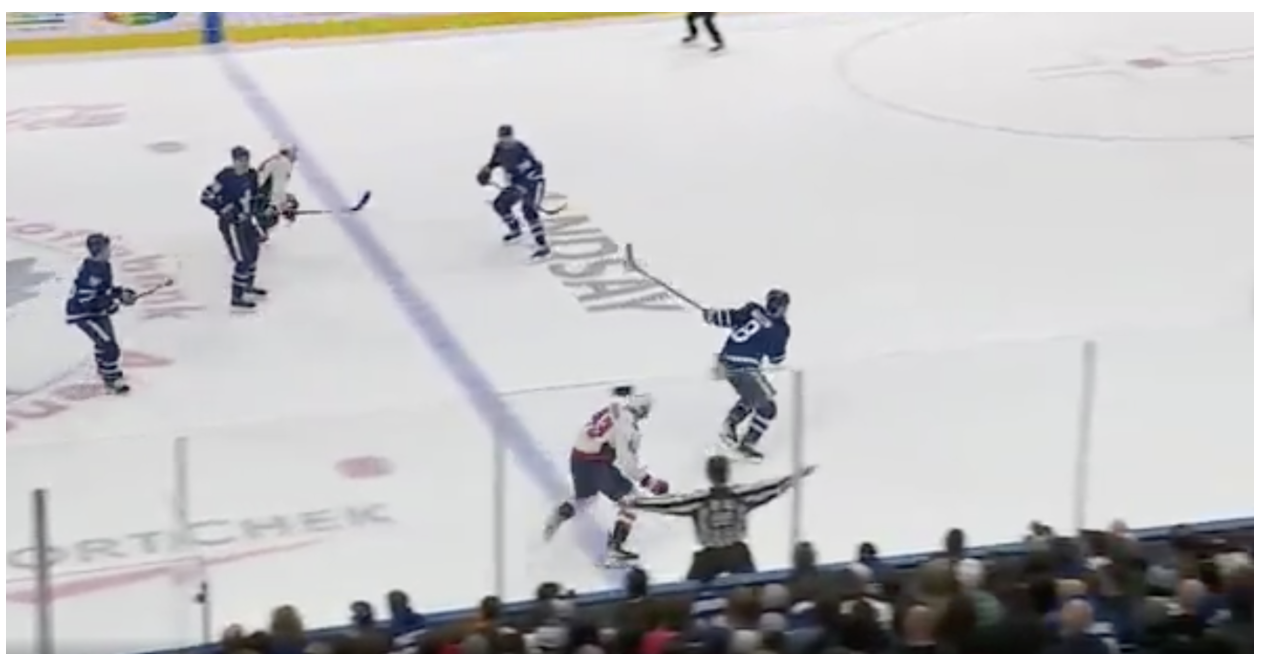
Who’s gaining on the Leafs’ defender Jake Muzzin and may be able to get past him:
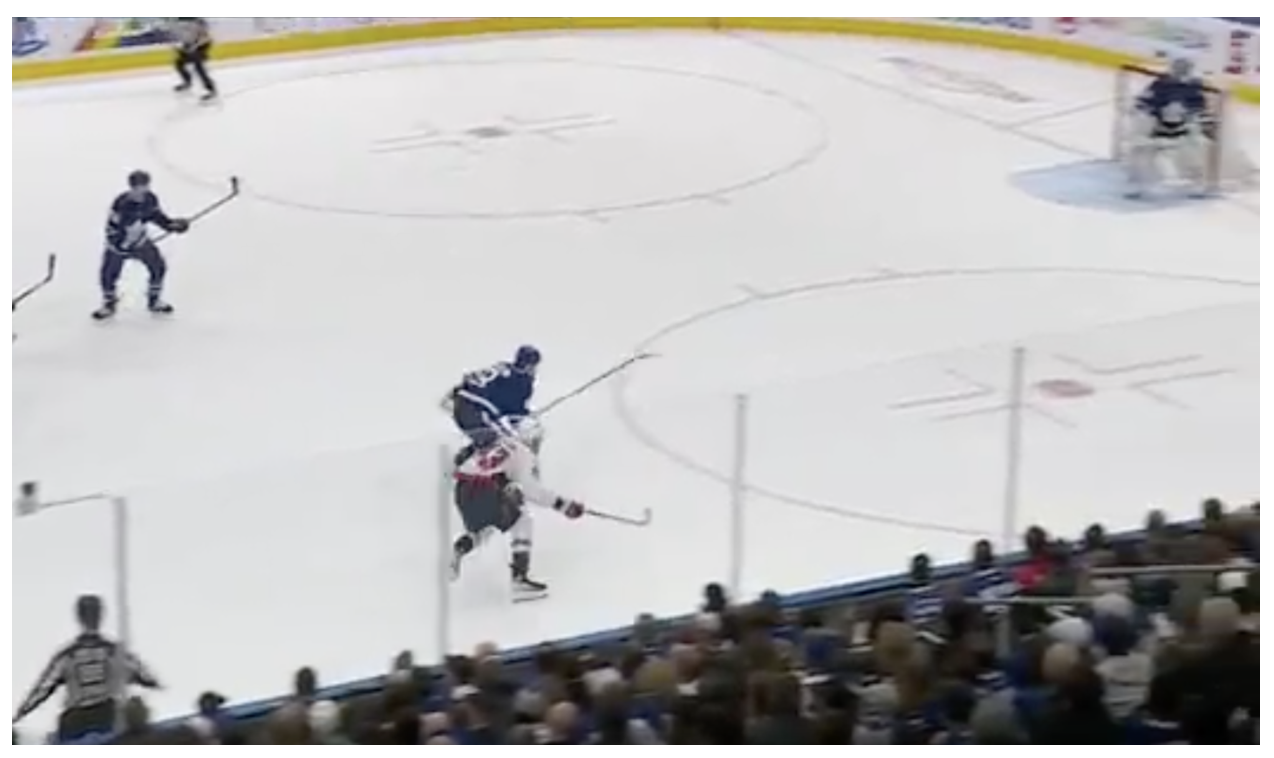
Who makes a late decisions to take a route that can only put him on a path for the goal crease, which if you’re huge and like scoring goals, is a pretty good place to end up:
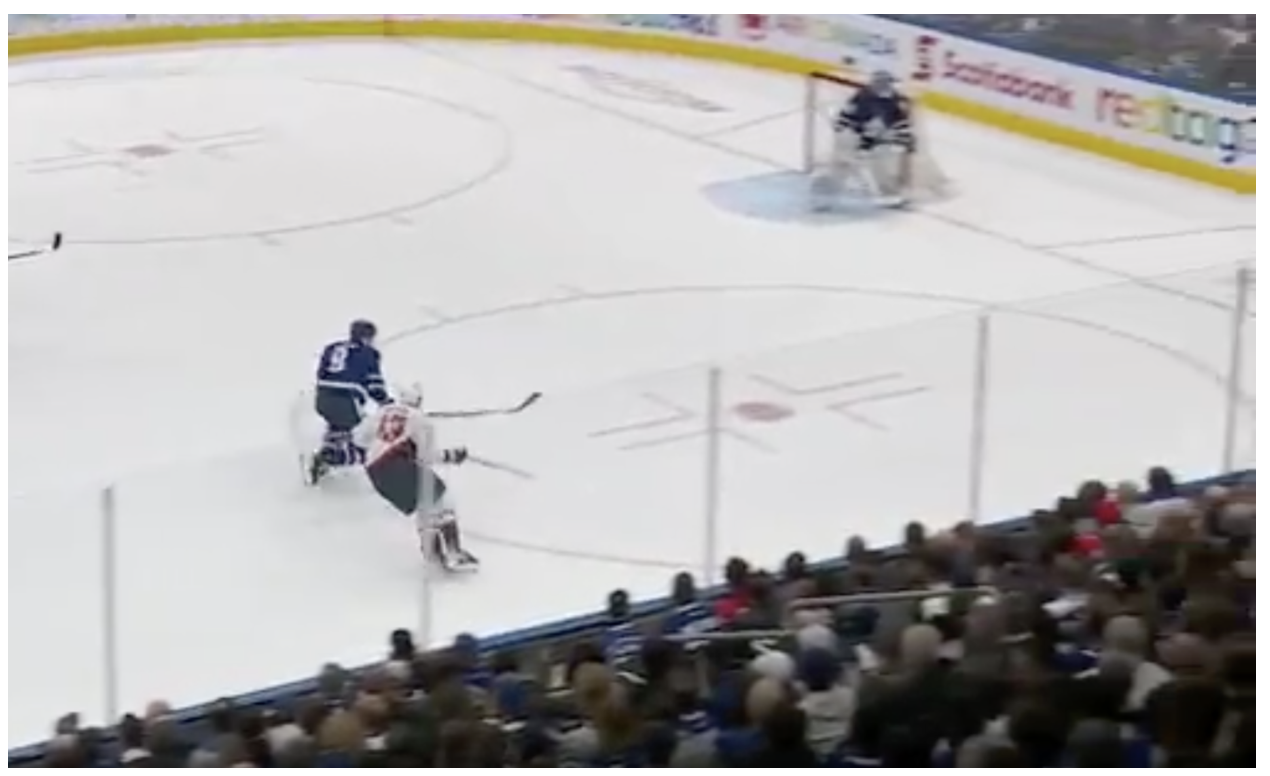
Wilson gets to a spot where he either gets a free pass (which likely isn’t going to happen), or he’s can claim he was pushed in:
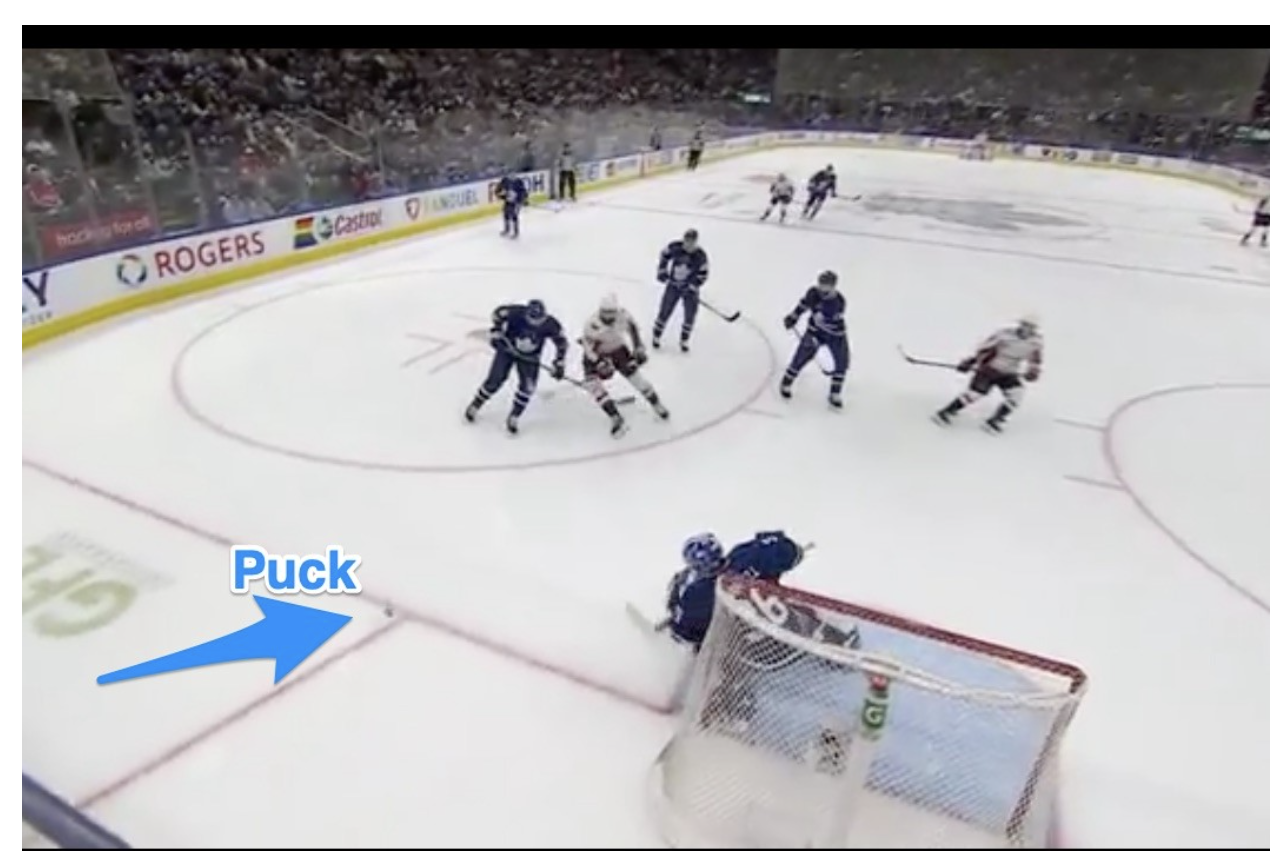
Of course, this isn’t Wilson’s complicated thought process. That part, which happens in a moment, is just the learned behaviour of “Route by net makes good chaos happen.”
Yes, the contact doesn’t happen if Campbell isn’t reaching to play the puck, but that’s the great part about always humming along the fringes of safe and legal around the crease. It’s when another player does something unusual when you’re given plausible deniability.
The refs deemed the contact “other than incidental” here (not a random accident), likely because of the route Wilson chose, and quite literally, because it was Wilson himself and that plays into subjective decision-making. Here are the two relevant passages here from the rulebook, including the phrase “inside or outside the crease.”
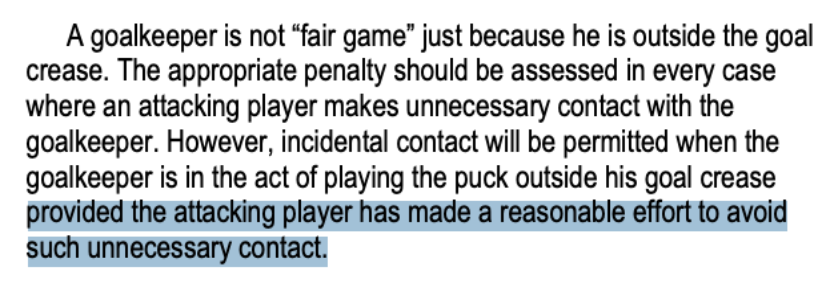
This part on how to call that from the reffing table in the rulebook comes up next:

When you find certain players saying, “Oopsie, did I do that?” by mistake, followed by their complete shock that they’d be accused of causing unintentional damage – and doing those things often – guys start to lose benefit of the doubt, a concept that Wilson forfeited long ago.
The truth is that if you play in the manner that puts you in those spots with regularity, and you’re able to find the grey area without taking it too far, it’s going to be worth it. More often than not, you’re going to get away with it, sometimes it’s going to create goals, it’s going to make the opposition uncomfortable and you’re constantly forcing people to make decisions. And when you’ve got the opposition thinking about you and counterpunching, you’ve got them reacting, as opposed to acting first, and you get the advantage.
It's a really hard style of play to contend with, which is why those players are sought after.
On Thursday night, the Leafs kept playing, and kept the Capitals on their heels, winning the game handily. It reminded me of this passage from the last time these two teams played (early March), and Wilson threw Leafs captain John Tavares to the ice after a whistle. Here was Keefe on how to deal with Wilson:
“It can go both ways for me," Keefe said. "I think there is a symbolic part of it, where you're staying together and all that. But you can say whatever you want to Tom Wilson – it’s not going to change a single thing about how he plays or what he does. So, I don't know if it's worth really engaging it.
“There's a certain number of guys that it doesn't matter. Just like, in a different way, it doesn't matter what you say or do to Michael Bunting – you're not going to change how he plays.
“So, you can pretend that it’s going to make a difference, but it's not going to make a difference. If I have my choice, I'd rather just keep playing. Play harder. Be more competitive when the puck drops.”
This time, the Leafs handled a Wilson situation the way their coach wanted them to. Kyle Clifford fought Wilson to at least make the statement that the team didn’t like the play, they carried the play and scored a bunch, and they moved on. But not every team is able to put aside these perceived slights, and because of that, there’s value in taking up that playing style.
It’s life in the grey area, though it often leads to opponents seeing red.








COMMENTS
When submitting content, please abide by our submission guidelines, and avoid posting profanity, personal attacks or harassment. Should you violate our submissions guidelines, we reserve the right to remove your comments and block your account. Sportsnet reserves the right to close a story’s comment section at any time.